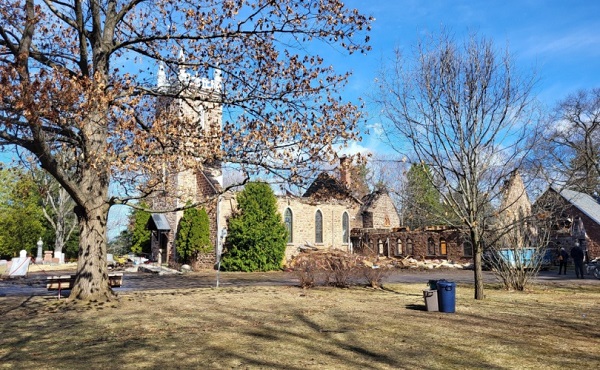Addictions
New documentary exposes safer supply as gateway to teen drug use
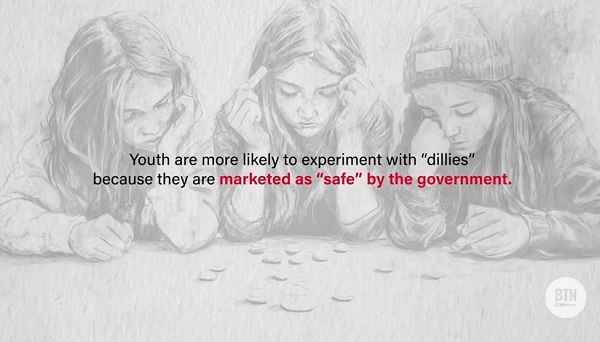
By: Alexandra Keeler
In a new documentary, Port Coquitlam teens describe how safer supply drugs are diverted to the streets, contributing to youth drug use
Madison was just 15 when she first encountered “dillies” — hydromorphone pills meant for safer supply, but readily available on the streets.
“Multiple people walking up the street, down the street, saying ‘dillies, dillies,’ and that’s how you get them,” Madison said, referring to dealers in Vancouver’s Downtown Eastside.
Madison says she could get pills for $1.25 each, when purchased directly from someone receiving the drugs through safer supply — a provincial program that provides drug users with prescribed opioids. Madison would typically buy a whole bottle to last a week.
But as her tolerance grew, so did her addiction, leading her to try fentanyl.
“The dillies weren’t hitting me anymore … I tried [fentanyl] and instantly I just melted,” she said.
Kamilah Sword, Madison’s best friend, was just 14 when she died of an overdose on Aug. 20, 2022 after taking a hydromorphone pill dispensed through safer supply.
Madison, along with Kamilah’s father, Gregory Sword, are among the Port Coquitlam, B.C., residents featured in a documentary by journalist Adam Zivo. The film uncovers how safer supply drugs — intended as a harm reduction measure — contribute to harm among youth by being highly accessible, addictive and dangerous.
Through emotional interviews with teens and their families, the film links these drugs to overdose deaths and explores how they can act as a gateway to stronger substances like fentanyl.
Some last names are omitted to respect the victims’ desire for privacy.
Subscribe for free to get BTN’s latest news and analysis, or donate to our journalism fund.
‘Not a myth’
Safer supply aims to reduce overdose deaths by providing individuals with substance use disorders access to pharmaceutical-grade alternatives, such as hydromorphone.
But some policy experts, health officials and journalists are concerned these drugs are being diverted onto the streets — particularly hydromorphone, which is often sold under the brand name Dilaudid and nicknamed “dillies.”
Zivo, the film’s director, points out the disinformation surrounding safer supply diversion, highlighting that some drug legalization activists downplay the issue of diversion.
In 2023, B.C.’s then-chief coroner Lisa Lapointe dismissed claims that individuals were collecting their safer supply medications and selling them to youth, thereby creating new opioid dependencies and contributing to overdose deaths. She labeled such claims an “urban myth.”
In the film, Madison describes how teen substance users would occasionally accompany people enrolled in the safer supply program to the pharmacy, where they would fill their prescriptions and then sell the drugs to the teens.
“It’s not a myth, because my best friend died from it,” she says in the film.
Fiona Wilson, deputy chief of the Vancouver Police Department, testified on April 15 to the House of Commons health committee studying Canada’s opioid crisis that about 50 per cent of hydromorphone seizures by police are linked to safer supply.
 |
Deputy Chief of the Vancouver Police Department, Fiona Wilson, testified on April 15 during the House of Commons ‘Opioid Epidemic and Toxic Drug Crisis in Canada’ health committee meeting.
Additionally, Ottawa Police Sergeant Paul Stam previously confirmed to Canadian Affairs that similar reports of diverted safer supply drugs have been observed in Ottawa.
“Hopefully, by giving these victims a platform and bringing their stories to life, the film can impress upon Canadians the urgent need for reform,” Zivo told Canadian Affairs.
‘Creating addicts’
The teens featured in the film share their experiences with the addictive nature of dillies.
“After doing them for like a month, it felt like I needed them everyday,” says Amelie North, one teen featured in the documentary. “I felt like I couldn’t stand being alive without being on dillies.”
Madison explains how tolerance builds quickly. “You just keep doing them until it’s not enough at all.”
Madison started using fentanyl at the age of 12, leading to a near-fatal overdose after just one hit at a SkyTrain station. “It took five Narcan kits to save my life,” she says in the film.
Many of her friends use dillies or have tried fentanyl, she says. She estimates half the students at her school do.
“Government-supplied hydromorphone is a dangerous domino in the cascade of an addict’s downward spiral to ever more risky behaviour,” said Madison’s mother, Beth, to Canadian Affairs.
“The safe drug supply is creating addicts, not helping addicts,” Denise Fenske, North’s mother, told Canadian Affairs.
“I’m not sure when politicians talk about all the beds they have opened up for youth with drug or alcohol problems, where they actually are and how do we access them?”
Sword, Kamilah’s father, expressed his concern in an email to Canadian Affairs. “I want the people [watching the film] to understand how easy this drug is to get for the kids and how many kids it is affecting, the pain it causes the loved ones, [with] no answers or help for them.”
 |
Screenshot: Dr. Matthew Orde reviewing Kamilah Sword’s toxicology report during his interview for the filming of ‘Government Heroin 2: The Invisible Girls’ in March 2024.
Autopsy
Kamilah’s death raises further concerns.
According to Dr. Matthew Orde, a forensic pathologist featured in the film, Kamilah’s toxicology report revealed a mix of depressants and stimulants, including flualprazolam (a benzo), benzoylecgonine (a cocaine byproduct), MDMA and hydromorphone.
Orde criticizes the BC Coroners Service for not following best practices by focusing solely on cardiac arrhythmia caused by cocaine and MDMA, while overlooking the potential role of benzos and hydromorphone.
Orde notes that in complex poly-drug deaths, an autopsy is typically performed to determine the cause more accurately. He says he was shocked that Kamilah’s case did not receive this level of investigation.
B.C. has one of the lowest autopsy rates in Canada.
Zivo told Canadian Affairs he thinks a public inquiry into Kamilah’s case and other youth deaths involving hydromorphone since 2020 is needed to assess if the province is accurately reporting the harms of safer supply.
“That just angers me that our coroners did not do what most of Canada would have done,” Sword told Canadian Affairs.
“It also makes me question why they didn’t do an autopsy, what is our so-called government hiding?”
Government Heroin 2: The Invisible Girls is available for free on YouTube.
This article was produced through the Breaking Needles Fellowship Program, which provided a grant to Canadian Affairs, a digital media outlet, to fund journalism exploring addiction and crime in Canada. Articles produced through the Fellowship are co-published by Break The Needle and Canadian Affairs.
Subscribe to Break The Needle. Our content is always free – but if you want to help us commission more high-quality journalism, consider getting a voluntary paid subscription.
Addictions
BC premier admits decriminalizing drugs was ‘not the right policy’
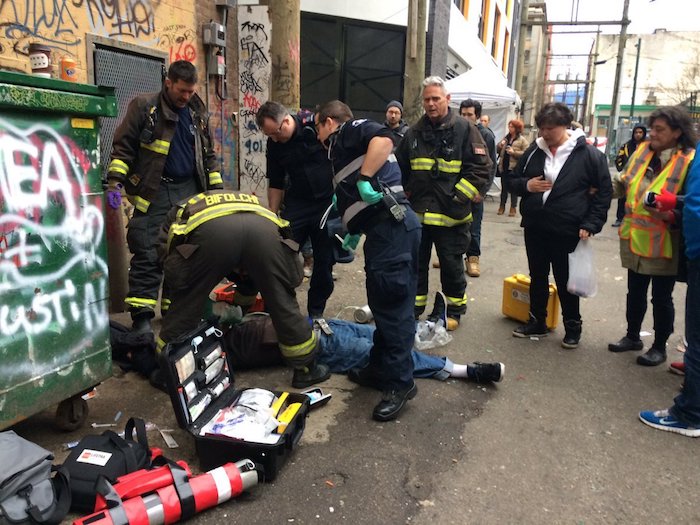
From LifeSiteNews
Premier David Eby acknowledged that British Columbia’s liberal policy on hard drugs ‘became was a permissive structure that … resulted in really unhappy consequences.’
The Premier of Canada’s most drug-permissive province admitted that allowing the decriminalization of hard drugs in British Columbia via a federal pilot program was a mistake.
Speaking at a luncheon organized by the Urban Development Institute last week in Vancouver, British Columbia, Premier David Eby said, “I was wrong … it was not the right policy.”
Eby said that allowing hard drug users not to be fined for possession was “not the right policy.
“What it became was a permissive structure that … resulted in really unhappy consequences,” he noted, as captured by Western Standard’s Jarryd Jäger.
LifeSiteNews reported that the British Columbia government decided to stop a so-called “safe supply” free drug program in light of a report revealing many of the hard drugs distributed via pharmacies were resold on the black market.
Last year, the Liberal government was forced to end a three-year drug decriminalizing experiment, the brainchild of former Prime Minister Justin Trudeau’s government, in British Columbia that allowed people to have small amounts of cocaine and other hard drugs. However, public complaints about social disorder went through the roof during the experiment.
This is not the first time that Eby has admitted he was wrong.
Trudeau’s loose drug initiatives were deemed such a disaster in British Columbia that Eby’s government asked Trudeau to re-criminalize narcotic use in public spaces, a request that was granted.
Records show that the Liberal government has spent approximately $820 million from 2017 to 2022 on its Canadian Drugs and Substances Strategy. However, even Canada’s own Department of Health in a 2023 report admitted that the Liberals’ drug program only had “minimal” results.
Official figures show that overdoses went up during the decriminalization trial, with 3,313 deaths over 15 months, compared with 2,843 in the same time frame before drugs were temporarily legalized.
Addictions
Canada must make public order a priority again
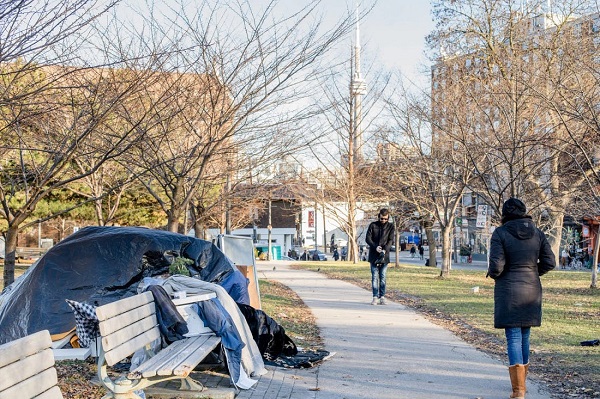
A Toronto park
Public disorder has cities crying out for help. The solution cannot simply be to expand our public institutions’ crisis services
[This editorial was originally published by Canadian Affairs and has been republished with permission]
This week, Canada’s largest public transit system, the Toronto Transit Commission, announced it would be stationing crisis worker teams directly on subway platforms to improve public safety.
Last week, Canada’s largest library, the Toronto Public Library, announced it would be increasing the number of branches that offer crisis and social support services. This builds on a 2023 pilot project between the library and Toronto’s Gerstein Crisis Centre to service people experiencing mental health, substance abuse and other issues.
The move “only made sense,” Amanda French, the manager of social development at Toronto Public Library, told CBC.
Does it, though?
Over the past decade, public institutions — our libraries, parks, transit systems, hospitals and city centres — have steadily increased the resources they devote to servicing the homeless, mentally ill and drug addicted. In many cases, this has come at the expense of serving the groups these spaces were intended to serve.
For some communities, it is all becoming too much.
Recently, some cities have taken the extraordinary step of calling states of emergency over the public disorder in their communities. This September, both Barrie, Ont. and Smithers, B.C. did so, citing the public disorder caused by open drug use, encampments, theft and violence.
In June, Williams Lake, B.C., did the same. It was planning to “bring in an 11 p.m. curfew and was exploring involuntary detention when the province directed an expert task force to enter the city,” The Globe and Mail reported last week.
These cries for help — which Canadian Affairs has also reported on in Toronto, Ottawa and Nanaimo — must be taken seriously. The solution cannot simply be more of the same — to further expand public institutions’ crisis services while neglecting their core purposes and clientele.
Canada must make public order a priority again.
Without public order, Canadians will increasingly cease to patronize the public institutions that make communities welcoming and vibrant. Businesses will increasingly close up shop in city centres. This will accelerate community decline, creating a vicious downward spiral.
We do not pretend to have the answers for how best to restore public order while also addressing the very real needs of individuals struggling with homelessness, mental illness and addiction.
But we can offer a few observations.
First, Canadians must be willing to critically examine our policies.
Harm-reduction policies — which correlate with the rise of public disorder — should be at the top of the list.
The aim of these policies is to reduce the harms associated with drug use, such as overdose or infection. They were intended to be introduced alongside investments in other social supports, such as recovery.
But unlike Portugal, which prioritized treatment alongside harm reduction, Canada failed to make these investments. For this and other reasons, many experts now say our harm-reduction policies are not working.
“Many of my addiction medicine colleagues have stopped prescribing ‘safe supply’ hydromorphone to their patients because of the high rates of diversion … and lack of efficacy in stabilizing the substance use disorder (sometimes worsening it),” Dr. Launette Rieb, a clinical associate professor at the University of British Columbia and addiction medicine specialist recently told Canadian Affairs.
Yet, despite such damning claims, some Canadians remain closed to the possibility that these policies may need to change. Worse, some foster a climate that penalizes dissent.
“Many doctors who initially supported ‘safe supply’ no longer provide it but do not wish to talk about it publicly for fear of reprisals,” Rieb said.
Second, Canadians must look abroad — well beyond the United States — for policy alternatives.
As The Globe and Mail reported in August, Canada and the U.S. have been far harder hit by the drug crisis than European countries.
The article points to a host of potential factors, spanning everything from doctors’ prescribing practices to drug trade flows to drug laws and enforcement.
For example, unlike Canada, most of Europe has not legalized cannabis, the article says. European countries also enforce their drug laws more rigorously.
“According to the UN, Europe arrests, prosecutes and convicts people for drug-related offences at a much higher rate than that of the Americas,” it says.
Addiction treatment rates also vary.
“According to the latest data from the UN, 28 per cent of people with drug use disorders in Europe received treatment. In contrast, only 9 per cent of those with drug use disorders in the Americas received treatment.”
And then there is harm reduction. No other country went “whole hog” on harm reduction the way Canada did, one professor told The Globe.
If we want public order, we should look to the countries that are orderly and identify what makes them different — in a good way.
There is no shame in copying good policies. There should be shame in sticking with failed ones due to ideology.
Our content is always free – but if you want to help us commission more high-quality journalism,
consider getting a voluntary paid subscription.
-

 Business2 days ago
Business2 days agoOver two thirds of Canadians say Ottawa should reduce size of federal bureaucracy
-

 National2 days ago
National2 days agoDemocracy Watch Renews Push for Independent Prosecutor in SNC-Lavalin Case
-
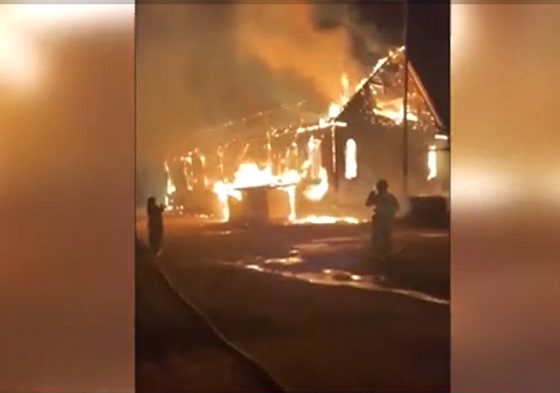
 Indigenous1 day ago
Indigenous1 day agoConstitutional lawyer calls for ‘false’ claims to end in Canadian residential schools burials
-

 Alberta17 hours ago
Alberta17 hours agoPremier Smith addresses the most important issue facing Alberta teachers: Classroom Complexity
-

 Alberta17 hours ago
Alberta17 hours agoAlberta taxpayers should know how much their municipal governments spend
-

 International1 day ago
International1 day agoItaly set to outlaw Islamic face coverings nationwide
-

 illegal immigration1 day ago
illegal immigration1 day agoLos Angeles declares a state of emergency over ICE deportations
-

 Business1 day ago
Business1 day ago‘Taxation Without Representation’: Trump Admin Battles UN Over Global Carbon Tax








